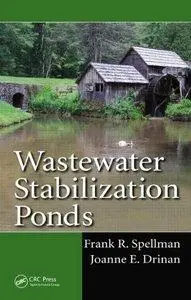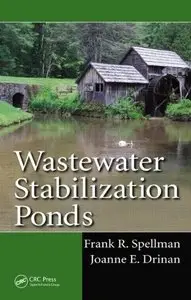Frank R. Spellman, Joanne E. Drinan, "Wastewater Stabilization Ponds"
2014 | ISBN: 1466593180 | English | 343 pages | PDF | 6 MB
2014 | ISBN: 1466593180 | English | 343 pages | PDF | 6 MB
Ponds (lagoons) have been used for centuries with great success in the treatment of wastewater. Ponds created for treatment, known as stabilization ponds, model the physical and biochemical interactions that occur in natural ponds. Easy to build and manage, stabilization ponds can accommodate large fluctuations in flow, and provide results that are comparable to conventional systems at a much lower cost. Wastewater Stabilization Ponds examines the use of this natural and highly effective process. The text is centered on wastewater pond management processes and operation procedures that provide passive treatment with a minimum of energy-driven mechanical elements.
It highlights the environmental principles, practices, engineering, and mathematics involved in the design and operation of conventional wastewater stabilization ponds. It also explores the major processes, procedures, and design methods relevant to wastewater treatment ponds. This includes the basic processes, in-pond design evolution and enhancements, oxygen addition, and modifications that require energy, nutrient removal, as well as effluent total suspended solids removal. Emphasizing the design, construction, and operation of wastewater ponds, the book serves as a valuable resource for anyone seeking information on pond construction and operation, knowledge of pond operation, and assistance in certification exam preparation and study.
Presents a design of wastewater stabilization ponds
Includes a complete description of pond process elements
Provides descriptions of pond insect macroinvertebrates
Incorporates pond morphometry calculations
Contains extensive pond-related math problems
Sustainability and energy conservation are underlying themes throughout the text and the authors offer valuable information on potential renewable energy sources.



